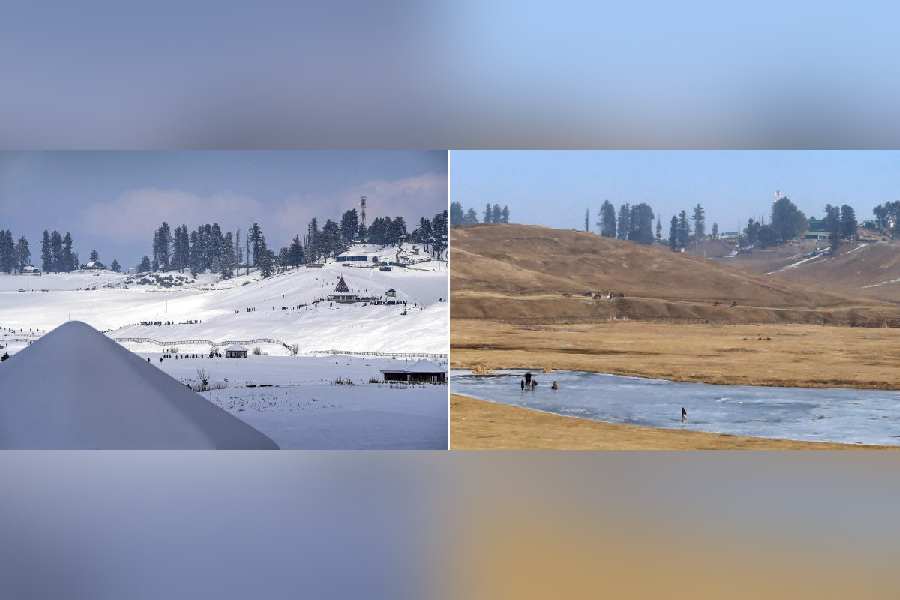The social media timeline of Farhat Naik, celebrated Valley-based snowboarder and instructor, would this time of the year be expected to be full of enchanting pictures of Kashmir’s snowy wonderland of Gulmarg, teeming with sliders and skiers.
But the string of pictures and videos he has put out this winter are testimony to how a prolonged dry spell has ravaged Kashmir.
One of Naik’s videos shows a wildfire sweeping through part of a golf course in the heart of Gulmarg, which usually remains under several feet of snow in winter, with firemen busy dousing the flames.
Gulmarg, which means a meadow of flowers, has flowers blooming on some patches — an eyesore this time of the year.
“These flowers used to bloom in April and May, but witnessing them bloom in January is shocking,” Naik has said in a post.
He told The Telegraph: “I have not seen such conditions in my decade-and-a-half career as a snowboarder. It is already the middle of January and there has not been a single day of snowboarding.”
Naik said Gulmarg had witnessed the first spell of snowfall in October in its higher reaches and the last in the middle of December. That snow has mostly melted barring a few patches.
“There has been no snow since. It may not be a concern for domestic tourists because they are more interested in the scenic beauty, but international adventure tourists are disheartened. Some have cancelled their trips,” Naik said.
He said the entire Himalayan region was witnessing dry weather.
On January 10, former chief minister Omar Abdullah had posted pictures clicked on January 6 last year and January 6 this year, and contrasted them. “I’ve never seen Gulmarg so dry in the winter,” he posted on X.
“If we don’t get snow soon, the summer is going to be miserable. Not to mention skiers like me who can’t wait to get on the slopes but there’s nothing to ski on.”
Ordinary residents are no less perturbed. On Friday, hundreds responded to a call from Srinagar’s Jamia Masjid to attend special prayers, also called Istisqa, for a respite from the dry spell.
A spokesperson for the mosque’s managing body said people prayed for forgiveness of their sins.
“If the dry weather persists, there is going to be a severe drought this summer, which will affect horticulture and agriculture. Winter tourism is also taking a hit,” he said.
Farhat Shaheen, associate professor at the School of Agricultural Economics and Business Management at the Sher-e-Kashmir University of Agricultural Sciences, said the farm economy would suffer if the dry spell continued into the spring.
“Not just agriculture but hydroelectricity generation too might be affected. There can be a water crisis too,” he said.
“I remember how similar conditions prevailed a few years ago when we had a dry winter. But we received good rainfall in spring and summer and everything became normal.”
An engineer with Kashmir’s Jal Shakti department said tankers with drinking water were being sent to many areas.
“The dry spell has dried up major water resources. This is peak snowfall season, which is key to recharging our water resources. If it (dry weather) continues, it can have a long-term impact on drinking water supply,” he said.
Officials said there was some respite on Saturday, with the far-off Gurez sector in Bandipora district of north Kashmir receiving light rainfall overnight.
Mukhtar Ahmad, head of the meteorological department in Srinagar, however, said he expected no major improvement in at least the next 10 days.
Ahmad said the change in Kashmir’s weather could be linked to global warming, which has led to the shortening of winters.










